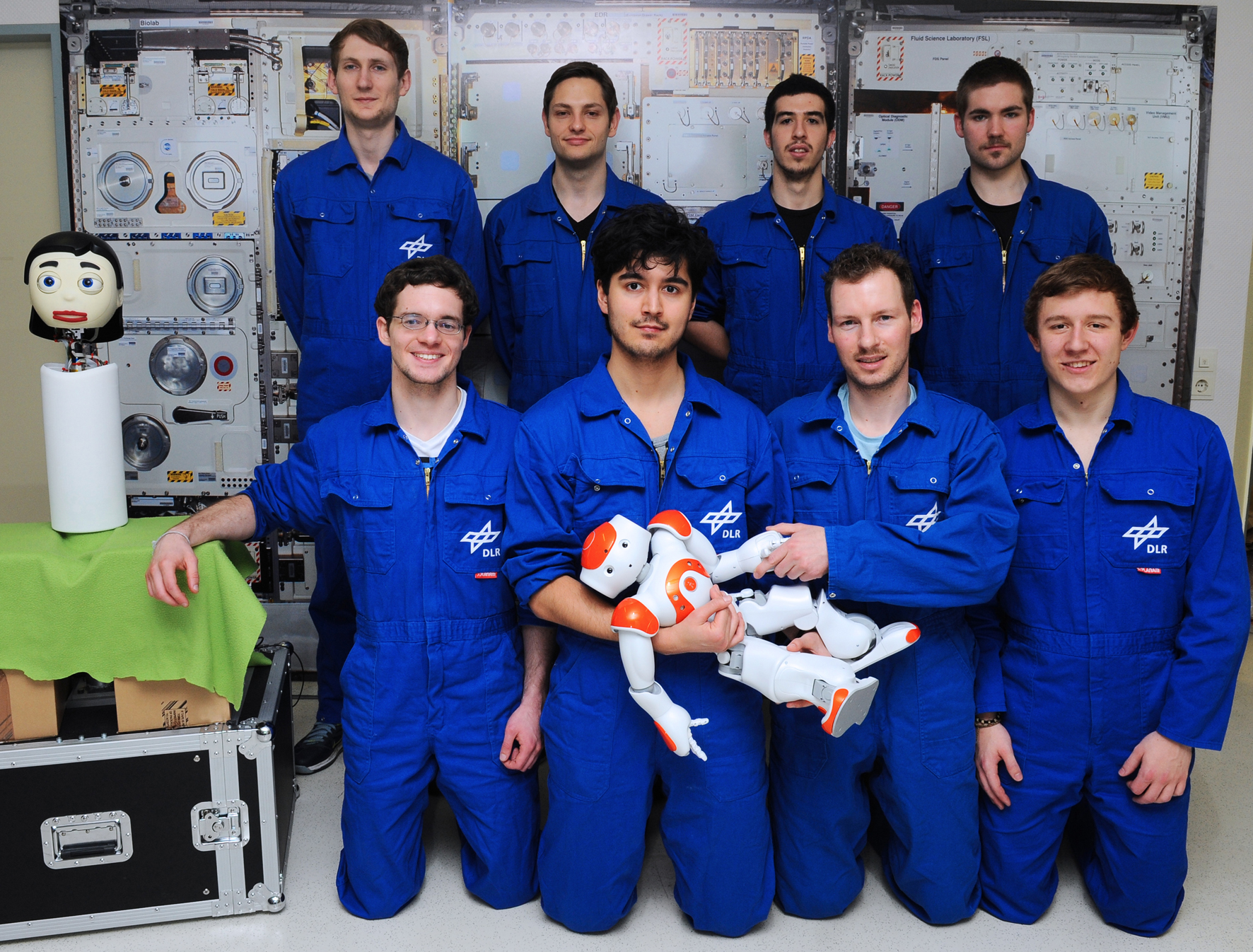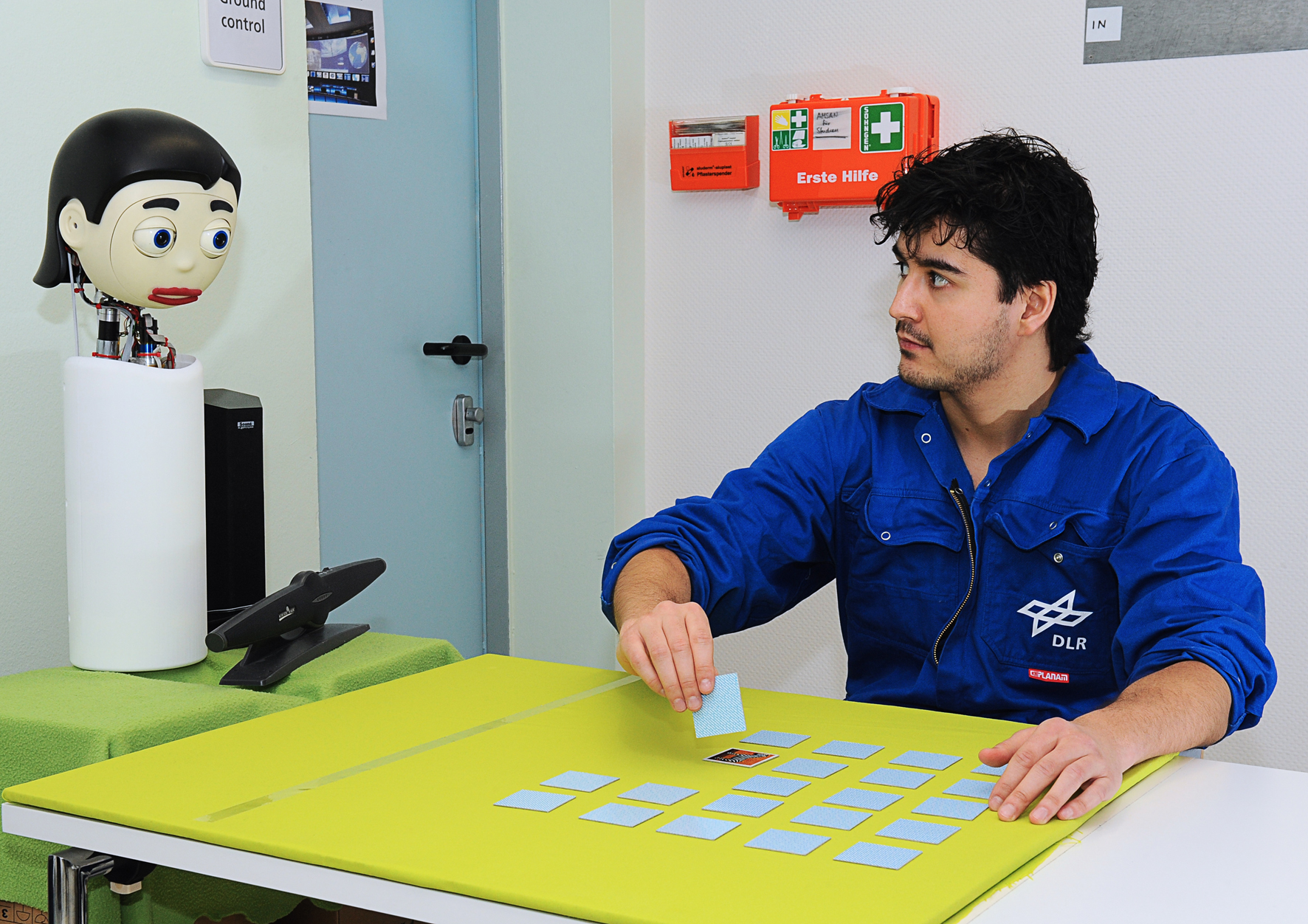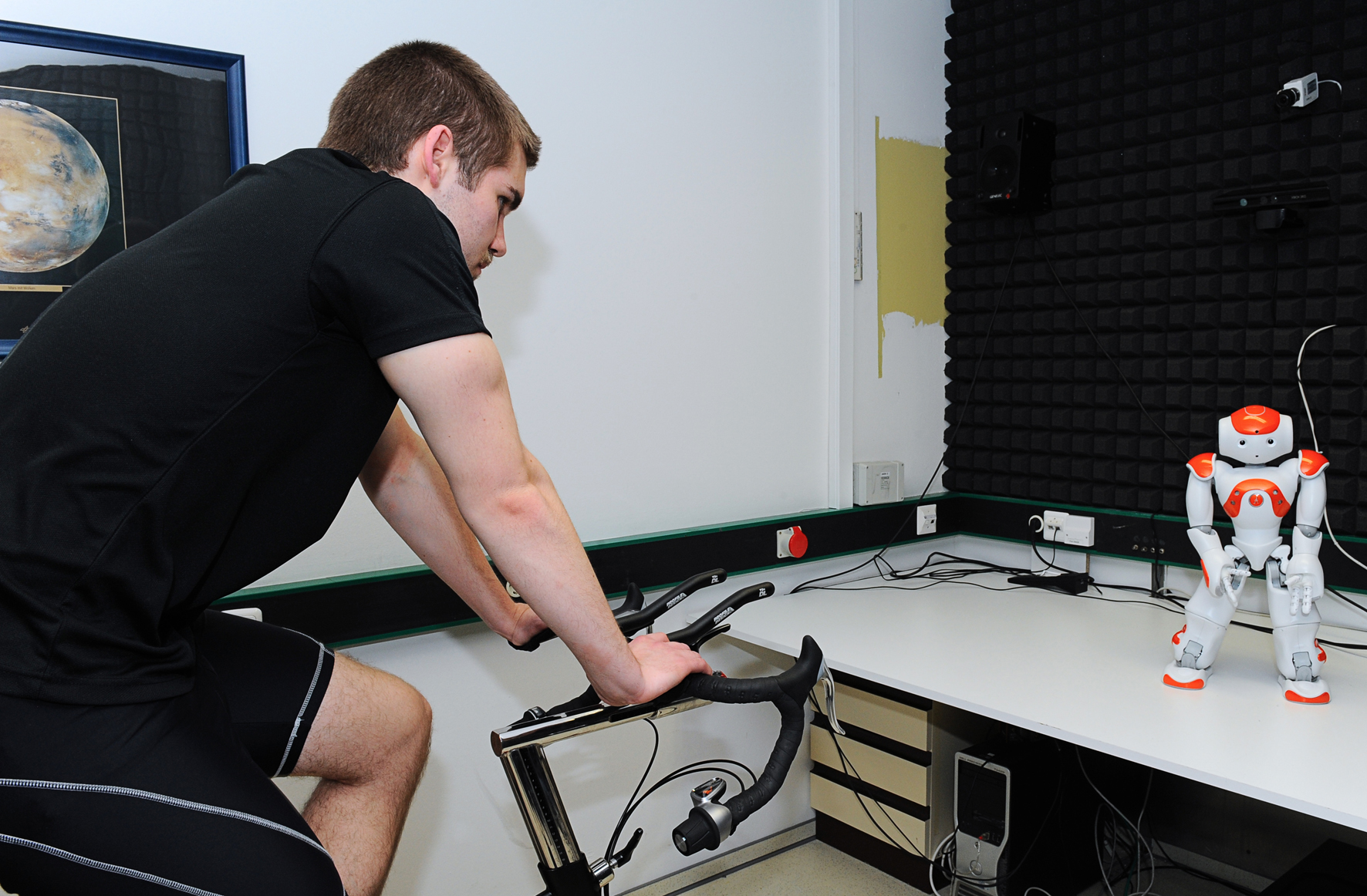Robot Exercising Coaches for Long-term Human-Robot Interaction
Eight test subjects spent 18 days living closely together in a sealed off area of the Institute of Aerospace Medicine at the German Aerospace Centre (DLR) in Cologne.
 Participants of the long-term project.
Participants of the long-term project.
‘Their living conditions were almost as cramped as those in a Space Shuttle,’ said Kummert. Distraction was provided by the two robots Flobi and Nao.
Flobi is a talking robotic head developed at Bielefeld University’s Cluster of Excellence on Cognitive Interaction Technology (CITEC).
 Flobi engaged in cogntive tasks.
Flobi engaged in cogntive tasks.
It uses facial expressions to react to a partner by moving its eyes, brows, eyelids, and lips. Researchers at Bielefeld completely reworked the mechanics of its neck, moth, and eyes to make it more robust for the ‘SoziRob’ project in which the isolation study is embedded. Flobi’s task in the study was to stimulate the test subjects mentally by playing several memory games with them every day. The robotic head uses facial expressions to react to the face of its human partner and it turns towards them – something that Flobi can do because it is able to locate the voice of its partner in space and evaluate her or his face visually. Flobi‘s colleague, the almost 60 centimetre high Nao, can talk, register persons visually, and move its hands, arms, and legs. The robot was responsible for sports training on board the test station.
 The humanoid robot Nao as physical exercise instructor.
The humanoid robot Nao as physical exercise instructor.
Every day, it trained each of the test subjects for one hour of spinning on the indoor exercise bike. It instructed the test subjects on, for example, how fast they should go, and told them how to perform their exercises.